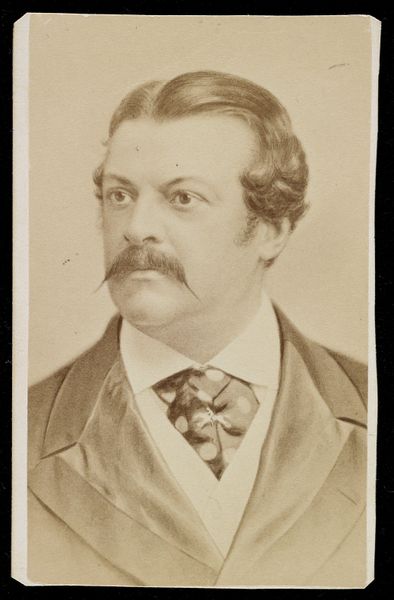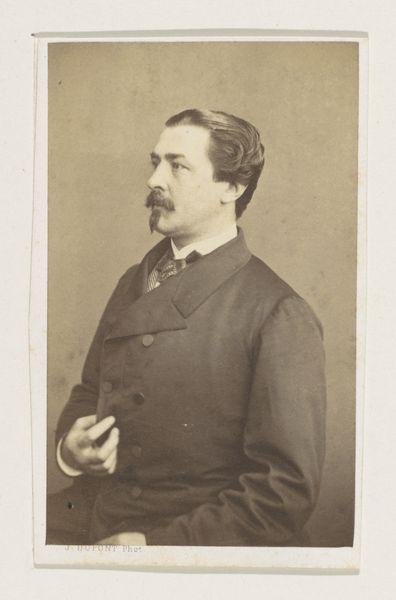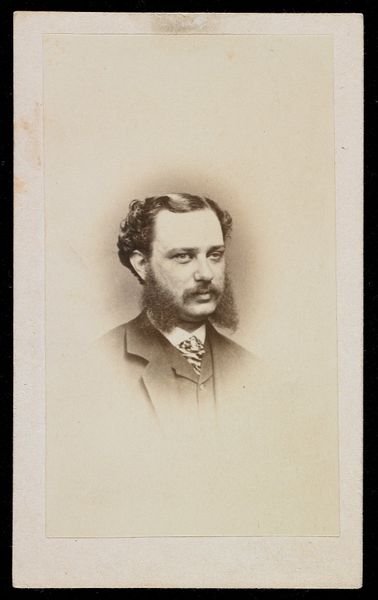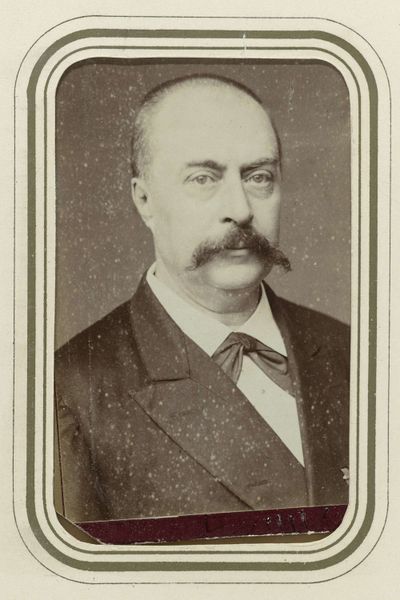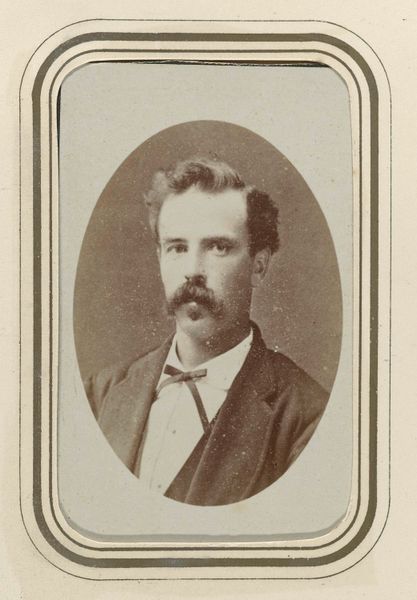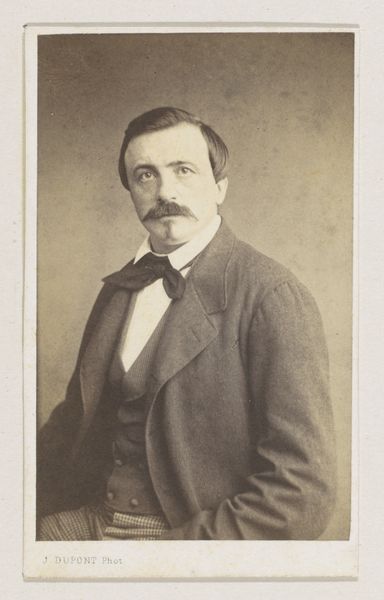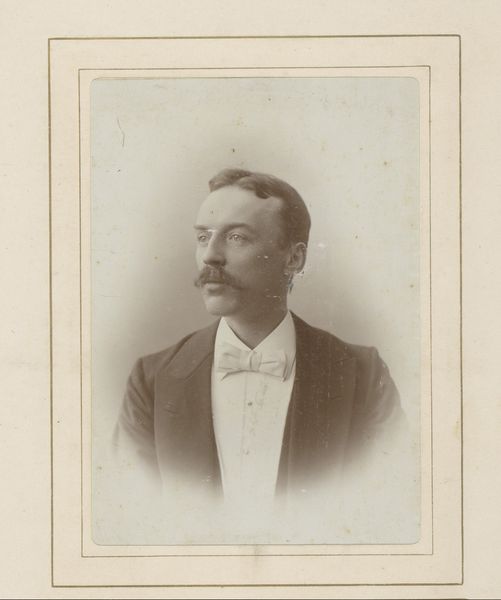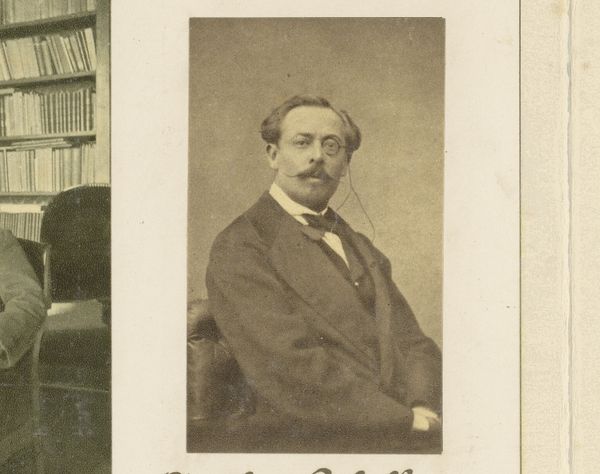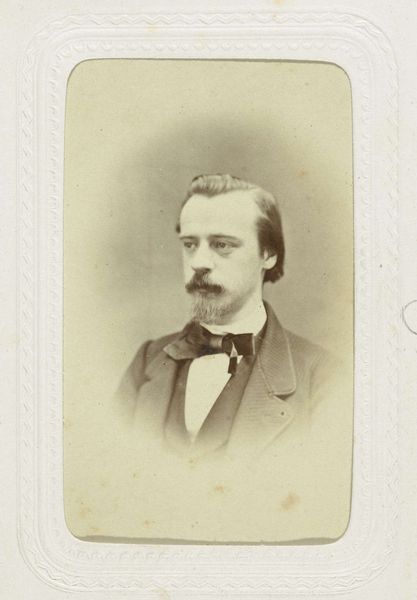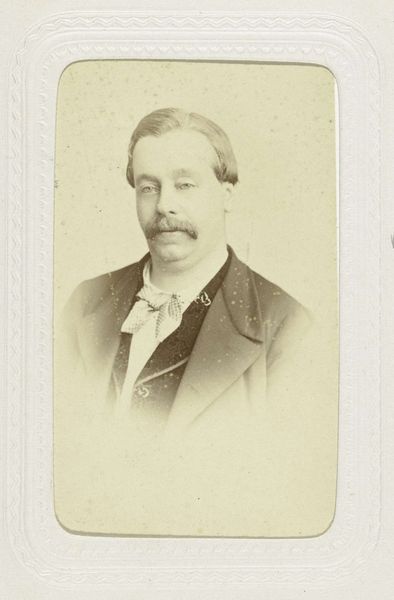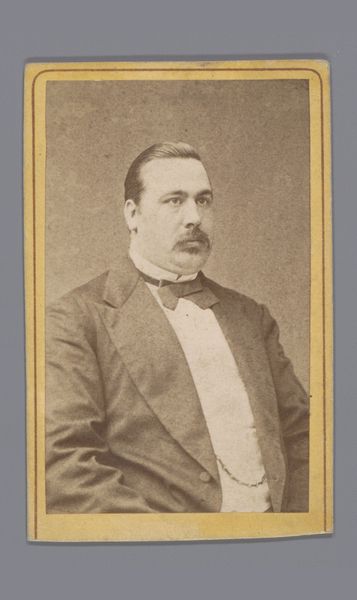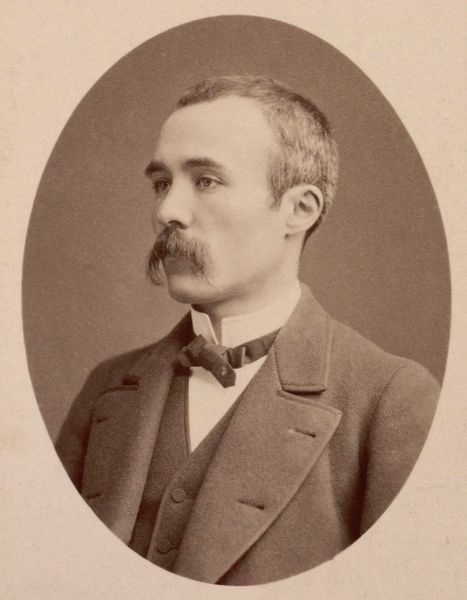
photography, albumen-print
#
portrait
#
photography
#
albumen-print
Dimensions: 3 3/4 x 2 1/4 in. (9.53 x 5.72 cm) (image)3 3/4 x 2 5/16 in. (9.53 x 5.87 cm) (mount)
Copyright: Public Domain
This is a portrait of William Castle made by Jeremiah Gurney, a photographer working in the 19th century. It’s a ‘carte-de-visite,’ a calling card made of an albumen print on paper. The process starts with a glass negative, which is then contact printed onto sensitized paper and mounted to a card. It was an ingenious format. By using multiple lenses on a single camera, many exposures could be made on one plate, enabling mass production. The result was a booming business, democratizing portraiture. Suddenly, ordinary people could afford to have their likeness recorded. But we should remember the labour involved. From preparing the light-sensitive emulsions to posing the sitter, photography was a complex, material process. Looking at Mr. Castle, we see not only his moustaches and fine suit, but also the skilled work and complex technologies that brought this image into being. Ultimately, photographic portraits like this blur the line between fine art and everyday commodity, reflecting a broader shift in the 19th century toward mass production and consumption.
Comments
minneapolisinstituteofart about 2 years ago
⋮
An important part of New York City-based photographer Jeremiah Gurney’s business was making small-size portrait photographs. Beginning in the 1850s, cartes de visite (calling cards, or visiting cards) photographs were popular. They were often made with a four-lensed camera, capturing four of the same image at once. They were printed eight on a sheet and each photograph was mounted on a thick cardboard paper sized 2.5 in. by 4 in. Cartes de visite were shared among families and friends, and mostly were stored in photographic albums. However, by the early 1880s, cartes de visite were replaced by larger cartes de imperiale (cabinet card), also albumen prints, mounted on cardboard backs measuring 4.5 in. by 6.5 in. Because of their size, cartes de imperiale would have been visible from across the room. As such, they were often displayed using frames and small stands.
Join the conversation
Join millions of artists and users on Artera today and experience the ultimate creative platform.
